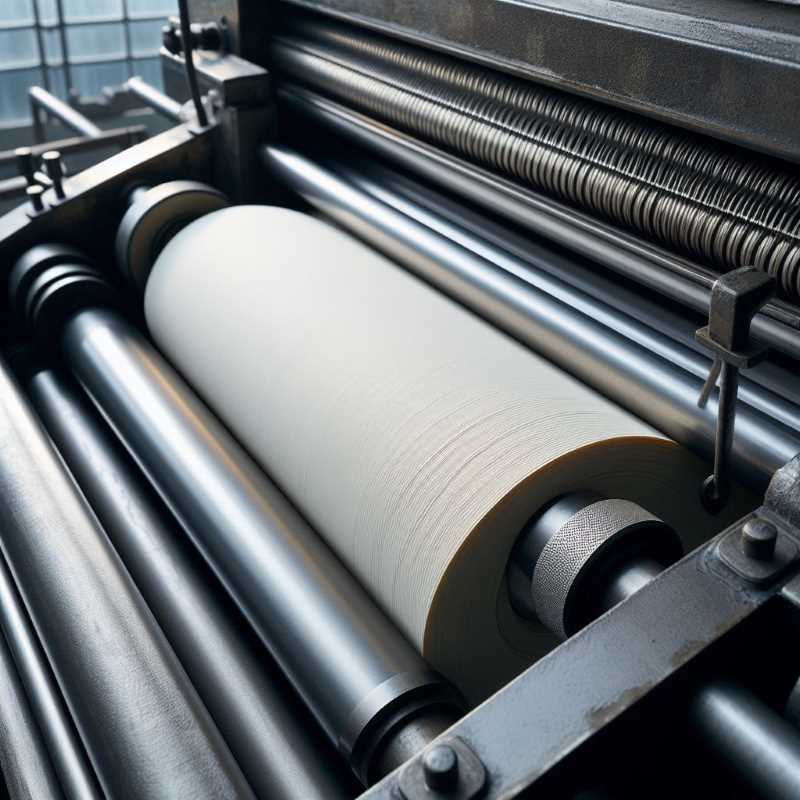How Mexico Documented Every Step of Papermaking
1982 Mexico enacted law to control foreign technology dependence. Law tracked papermaking process, from wood chipping to finished product. This story explores the fight for self-reliance through the lens of a seemingly ordinary object: paper.

On January 11, 1982, the Law on the Control and Registration of the Transfer of Technology and the Use and Exploitation of Patents and Trademarks was published in the Official Gazette of the Federation (DOF). Thus, the National Registry of Technology Transfer was created, which represented a significant step towards the national objective of establishing an autonomous technological development policy. Likewise, it sought to break a pernicious cycle of external technological dependence in the country and resolve a concern that Mexico, together with Third World countries, had about issuing laws to control the technological flow.
At that time, foreign investment, especially from transnational corporations, imposed a technological dependency that was difficult to eliminate. The new law sought to change that dynamic by instituting a mechanism to register and control the transfer of foreign technology to companies established in Mexico. Two fundamental reasons were mentioned for this initiative: first, it provided crucial information on the technology acquired by the country and the modalities of that acquisition, which would serve as a basis for future development policies. Secondly, it addressed the negative aspects of the uncontrolled process of technology acquisition, ensuring that this acquisition was carried out in a manner beneficial to the overall objectives of the country's industrial development.
With the implementation of said law, which fell under the jurisdiction of the Ministry of Commerce and Industrial Development (SECOFI), manufacturing processes of Mexican companies were registered, as was the case of paper manufacturing. In a file that is kept in the AGN, the process for obtaining the paper is described, from which we obtained the following information:
The paper we use every day comes from cellulosic raw materials such as wood, straw, hemp, linen, cotton and other materials, including textile industry waste and paper waste. Pine wood is especially important and undergoes a special process to convert it into the pulp that forms the basis of paper.
The paper manufacturing process in the 80s of the last century worldwide was carried out in the following way:
- Obtaining cellulose:
Description of the process: it begins with pine wood, which can come from sawmills, furniture workshops or be acquired directly in the mountains. It is chopped and cooked at high temperatures and steam pressure in a digester. This allows caustic soda and other chemicals to penetrate evenly into the wood, separating the cellulosic fibers. After the pulp is refined and impurities removed, the length of the fibers is adjusted before being sent to machines for paper production.
- Paper Production:
Production process description:
Paper products are divided into categories such as Liner, Medium, and Paperboard (coated or uncoated).
Cellulosic fiber, both from wood pulp and recycled, is the main raw material. Chemical additives are added to improve the quality and specific characteristics of the paper, for example, moisture resistance.
The manufacturing process involves preparing the dough, forming sheets, pressing, drying, and finishing.
- Detailed steps of paper making process:
Preparation of the paste: cellulosic fiber is mixed with water in controlled quantities to obtain a uniform paste, which is then cleaned and refined.
Forming: The pulp is sent to the forming section of paper machines, where it is evenly distributed over a cloth and formed into layers.
Pressing: The wet leaves are passed through pressing rollers to remove excess water, reducing the moisture content to around 54-56%.
Drying: The leaves are dried in cylinders with steam pressures, reducing the moisture content to around 7%. The hot air is used to evaporate the remaining water.
Finishing: The sheets are pressed into cylinders to improve their smoothness. Chemical agents can be added depending on the desired characteristics. The paper is then wound into rolls or cut into sheets according to customer requirements.
Cardboard Coating: A special solution is applied that improves printing quality. This solution includes components such as kaolin, titanium dioxide and acrylic resins.
After coating, the sheet is dried and calendered to obtain the desired texture. Finally, it is cut according to the client's needs to be sent.
The paper manufacturing process is complex and requires careful control at each stage to ensure the quality of the final product.
The report describes processes for the manufacture of different types of paper, as well as the main Mexican companies that operated in the field, such as CAJAS CORRUFGADAS DE MEX. S. A. with the product semikraft paper, ntal liner, CARDBOARD AND PAPER FROM MEX. S.A. that manufactured cardboard, liner medium, ADAMEX S.A. which produced bond, dielectric ledger, FABRICA DE PAPEL MONTERREY, S.A is also registered with the manufacture of medium, lines, semikraft, among others.
Source: Archivo General de la Nación. “Obtención del Papel: Un Vistazo al Proceso.” gob.mx, https://www.gob.mx/agn/es/articulos/obtencion-del-papel-un-vistazo-al-proceso?idiom=es. Accessed 19 May 2024.




